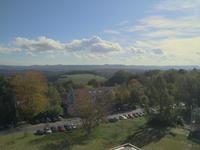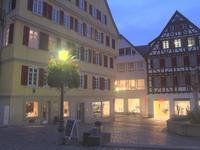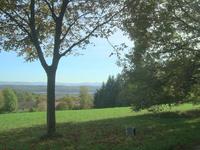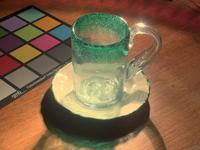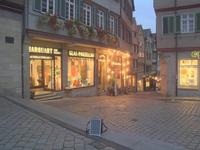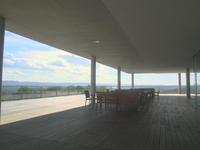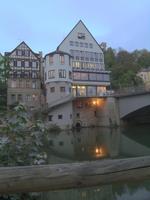Do HDR Displays Support LDR Content? A Psychophysical Evaluation
|
|||||
Link to PDF Bibtex The development of high dynamic range (HDR) imagery has brought us to the verge of arguably the largest change in image display technologies since the transition from black-and-white to color television. Novel capture and display hardware will soon enable consumers to enjoy the HDR experience in their own homes. The question remains, however, of what to do with existing images and movies, which are intrinsically low dynamic range (LDR). Can this enormous volume of legacy content also be displayed effectively on HDR displays? We have carried out a series of rigorous psychophysical investigations to determine how LDR images are best displayed on a state-of-the-art HDR monitor, and to identify which stages of the HDR imaging pipeline are perceptually most critical. Our main findings are: (1) As expected, HDR displays outperform LDR ones. (2) Surprisingly, HDR images that are tone-mapped for display on standard monitors are often no better than the best single LDR exposure from a bracketed sequence. (3) Most importantly of all, LDR data does not necessarily require sophisticated treatment to produce a compelling HDR experience. Simply boosting the range of an LDR image linearly to fit the HDR display can equal or even surpass the appearance of a true HDR image. Thus the potentially tricky process of inverse tone mapping can be largely circumvented. Test Image Set *JPEG images are tone-mapped using the Photographic Tone Mapping Operator (http://www.cs.ucf.edu/~reinhard/cdrom/). Experiment One: HDR vs. LDR We compared three imaging pipelines in terms of "looking best" to an observer: 1) HDR capture, HDR display (full HDR pipeline, referred to as hdr) 2) HDR capture, LDR display (tone mapping pipeline) 3) LDR capture, LDR display (conventional pipeline) For the tone-mapping pipeline (2), three tone mapping operators were used: bilateral filtering (bila), histogram adjustment (hist), photographic operator (phot). For the conventional pipeline (3), two exposures were used: subjective best (subj, determined by a pilot study --see below--) and objective best (obje, the exposure with the fewest number of under- and over-exposed pixels). When these two were the same image, the second objective best was used to maintain the same number of stimuli for all scenes. Results are shown below. Note that a shorter bar represents a higher visual preference.  Based on Tukey's HSD, the following similiarity groups are obtained:  Experiment One confirms that participants really do prefer HDR displays to LDR displays. It also shows, perhaps surprisingly, that tone-mapped HDR images are often no better than the best single LDR exposure from a bracketed sequence. Experiment Two: Dynamic Range vs. Luminance Experiment one revealed that a full HDR pipeline outperfoms both tone mapping and conventional imaging pipelines. In the second experiment, we aimed to understand whether this is due to the higher dynamic range, or higher luminance levels which are simultenously achiavable by the HDR display. In addition, we tested three simple dynamic range expansion techniques (i.e. inverse tone mapping), to understand whether such techniques can help achieve true HDR performances. To this end, we used the following six stimuli: 1) HDR image with physically correct luminances (hdr) 2) Subjective-best exposure (subj_avg) with the same mean luminance as hdr 3) Subjective-best exposure (subj_bri) with quadrupled mean luminance as that of subj_avg and hdr, but the same dynamic range as subj_avg 4) Linear expanded (subj_lin) best exposure 5) Non-linearly expanded (subj_0.45) best exposure -- with an exponent of 0.45 6) Non-linearly expanded (subj_2.2) best exposure -- with an exponent of 2.2 Results are shown below (aggregated over all scenes for each attribute). Note that a shorter bar represents a higher visual preference.  Based on Tukey's HSD, the following similiarity groups are obtained:  Experiment Two suggests that mean luminance generally plays a more important role than contrast in the quality of various visual attributes. Only when the mean luminances were equal, higher dynamic range images were preferred. Perhaps more importantly, Experiment Two shows that artificially expanding the dynamic range of a conventional image significantly enhances its visual appeal together with other important visual attributes. Among the three expansion methods tested, linear outperfoms either of the non-linear techniques. Pilot Study We conducted a pilot study to determine which single exposure is the best among the bracketed sequence used to create the HDR image for each scene. This best exposure is used as input to Experiment One and Two. Here we show the results of the Pilot Study which are not included in the original paper. In the pilot study, we selected the middle five exposures from each of the bracketed sequences; the other exposures were clearly under or over-exposed. Then we asked participants to choose the best exposure (among the five) for each scene. The results are plotted on two different scales below. On the left, the mean best exposure is shown with respect to ordering exposures by mean luminance. On the right, again the best mean exposure is shown, however, this time by ordering with respect to fewest number of over- and under-exposed pixels. These results show that participants do not always choose the image with the fewest over- and under-exposed pixels as the best one. Also, as shown on the left plot, participants are not always simply choosing the middle exposure.  |


